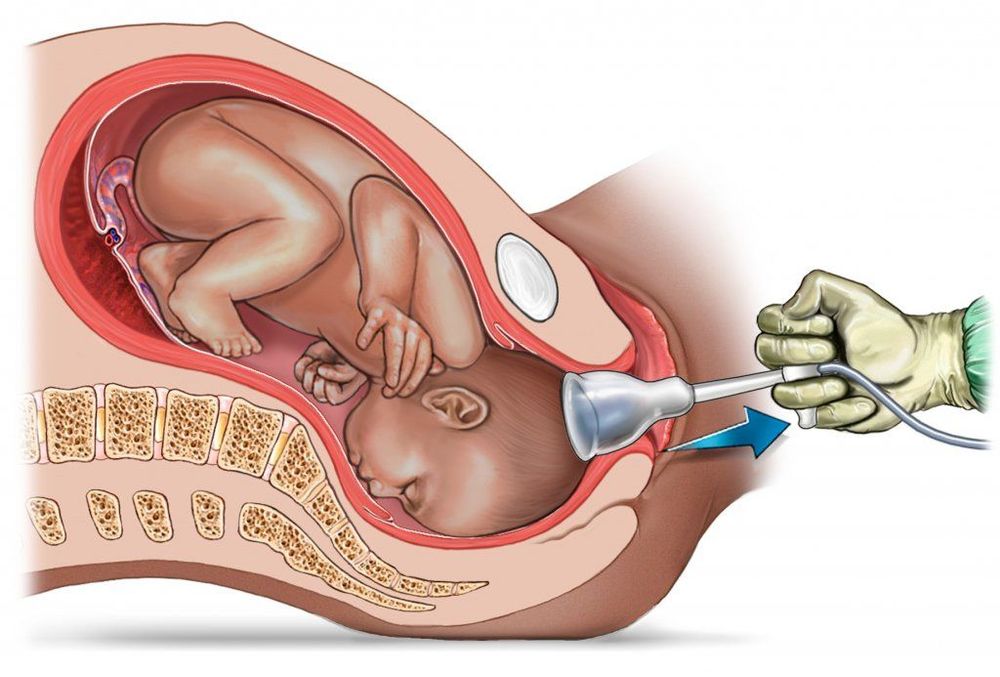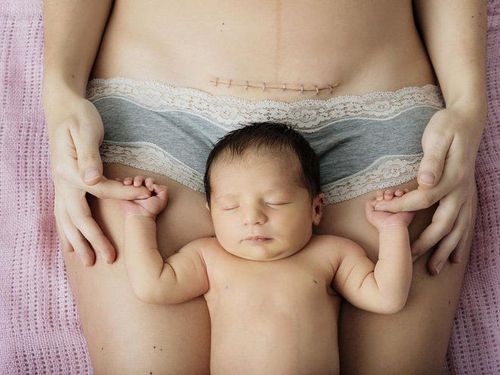This is an automatically translated article.
The article was written by Dr. CKI Truong Nghia Binh - Department of Obstetrics and Gynecology, Vinmec International Hospital Da Nang.Giving birth is usually not an easy experience for most pregnant women. Vaginal birth is the most common method of delivery. However, many pregnant women face many difficulties in the process of having a vaginal delivery and need to be assisted with a procedure to make the delivery easier.
1. What is vaginal birth?
Vaginal birth (also known as vaginal birth) is a common birth method where the fetus is pushed down the genital tract and then out through the vagina. Assisted vaginal delivery is a way to make labor easier for pregnant women, especially for difficult births, with the help of obstetric forceps or vacuum suction.Currently, the frequency of difficult births requiring surgical support falls in about 3% of vaginal births in the United States.
2. Instruments to support normal birth
There are two types of tools used during a pregnant woman having a difficult birth:Obstetric forceps: Obstetric forceps look like two large spoons. They are inserted into the vagina and placed around the baby's head. The doctor will use this device to apply gentle traction to help orient the baby's head away from the birth canal. Meanwhile, the pregnant woman continues to push the baby out. Obstetric suction cup: A vacuum device shaped like a small cup with a handle attached. The suction cup is inserted into the vagina, close to the top of the baby's head, and applies just enough gentle suction to help bring the baby's head out more easily. Meanwhile, the pregnant woman's pelvic muscles continue to contract to push the baby out. To assist with difficult births, the doctor will choose an appropriate device, depending on many factors, including the doctor's practical experience and the mother's situation during labor.

3. Why do some pregnant women need support during a vaginal birth?
In fact, not all pregnant women are completely comfortable during vaginal birth. The doctor will consider some of the following reasons to decide to perform a vaginal birth with a procedure, to make labor easier for pregnant women:When there is concern about abnormal heart rhythms in the baby during when the mother goes into labor. The delivery time was too long, the baby's head stopped moving and got stuck in the birth canal. Pregnant women show signs of exhaustion. A medical condition that limits a pregnant woman's ability to push (such as heart disease).
4. Factors to be considered before giving birth by vaginal procedure
Before deciding to support a pregnant mother with a vaginal birth with medical tools, the doctor will evaluate a number of necessary factors to ensure the highest safety for the health and life of the mother and baby. These factors include: Your baby's estimated weight, your baby's current position in the birth canal, and whether your pelvis is large enough for a normal birth. In addition, the cervix should be fully dilated, and the baby's head should be in the ready position (meaning that the baby's head has descended into your pelvic area).5. Benefits when pregnant women give birth usually supported by the procedure
One of the main advantages for pregnant women receiving technical assistance during a vaginal delivery is that it helps to avoid the risk of a cesarean section for difficult cases. Because, cesarean section is a major surgery and has many risks for both mother and baby, such as heavy bleeding and infection, which seriously affects the delivery process.If you want to have another baby, then avoiding a cesarean section can help prevent some possible complications in the future when you have to have multiple cesarean deliveries. On the other hand, the postpartum recovery time is usually shorter than the cesarean section recovery time. In addition, pregnant women who give birth often with the help of a procedure can give birth faster than a cesarean section.

6. The risks when performing procedures to support difficult births
Both obstetric forceps and vacuum-assisted methods have the potential for mild trauma to tissues in the vaginal, perineal, and anal areas. In some cases, postpartum women suffer from urinary incontinence as a result of the above-mentioned traumas. Urinary incontinence can go away on its own with time, or with treatment if needed.Difficult delivery procedures also cause certain complications for your baby, although the overall injury rate is quite low. Complications can include: Wounds to the baby's head, scalp, and eyes, bleeding inside the skull, and problems with nerves in the face and arms. To date, there is no evidence that the use of medical devices to assist in difficult births has any effect on the child's development.
After giving birth, you are likely to experience pain and bruising in the perineal area. Walking and standing can be difficult at first. If you have an episiotomy, your doctor will have to stitch the tear up. If the tear is small, it will likely heal on its own without stitches. Recovery can take up to several weeks.
7. What should pregnant women do to reduce pain and swelling after being assisted in childbirth?
To help reduce pain and swelling after childbirth with the impact of medical devices, pregnant women can apply the following ways:Taking over-the-counter pain relievers, like Ibuprofen is a good choice if you are pregnant Breastfeeding. Acetaminophen is also an appropriate medication. Apply an ice pack, or cold gel pad to the painful area. Sit in a pool of cool water, the water level high enough to cover your butt and hips (known as a sitz bath). Try putting some witch hazel on a tampon. Witch hazel extract has a cooling effect, suitable for women recovering from childbirth. Talk to your doctor about using numbing medications or creams to relieve pain. Some sprays can be purchased without a prescription. If you feel uncomfortable sitting, add extra pillows. There are special cushions that can make your perineal area more comfortable.
8. Possibility of having to assist in the next vaginal birth
If you've had a vaginal birth and need support from the procedure, chances are you'll have to go through it again in your next pregnancy. However, it is very likely that the doctor will actively intervene early so that the pregnant woman can give birth faster and easier than the first time. Several factors increase the likelihood that a woman will need to support her next vaginal delivery, including an excessively long interval between pregnancies (more than 3 years) or a fetus predicted to have a larger than normal weight. often.Giving birth is considered the most unforgettable experience for all pregnant mothers because the mother has to work hard and endure a lot of pain for her baby to be born. The support with techniques for pregnant mothers with difficult births helps the birth process to be somewhat softer and smoother.
At Vinmec International General Hospital, pregnant women can experience "painless delivery" thanks to the technique of back anesthesia (also known as epidural anesthesia) to relieve pain during labor. This technique is performed when the uterine contractions become stronger and the mother has no abnormalities in the test results. This method allows labor to take place in the most ideal conditions. After an epidural is performed, the woman will lose pain sensation from the abdomen to the legs but still be awake to recognize when there is a uterine contraction and especially still be able to push. Thanks to an epidural, the labor process turns a new page: You can deliver your baby without pain at all! Cases of prolonged labor are rare and the risk of an epidural to mother and baby is negligible.
The role of anesthesiologist is very important and requires a high level of expertise. At Vinmec, there is a team of experienced and professional anesthesiologists who will help pregnant women experience the safest, painless delivery.
Please dial HOTLINE for more information or register for an appointment HERE. Download MyVinmec app to make appointments faster and to manage your bookings easily.














